Goodbye 2017, hello Vision Consultancy 2018
As the New Year clock strikes midnight, Premier Accounts will launch Vision Consultancy, our Cloud-based business improvement service with a new monthly management club to help you drive your own company forward in 2018.
Are you looking for something exciting to do as winter turns into a promising spring? Come and join us at Premier Accounts where there will be lots of new business activity going on.
At a time of economic opportunity but some uncertainty, many business owners tell us that they would very much welcome experienced support over a wide range of business development, planning, management and systems issues.
Vision Consultancy is designed to do just that, with the added bonus of membership to a new monthly group business club where the open but confidential discussion will be about many topics large and small that SMEs share in common.

All change for the better
One reason why we feel that now is a good time to get closer to our clients, and help them to get closer to each other through group discussions, is that with 30 years of experience under our own belt we are well placed to help others benefit from our what we have learned.
For the last five years in particular, we have been assembling our own core of specialised business knowledge. There have of course been bumps and scrapes along the way. It is difficult to improve without also making mistakes. Our story may be a familiar one to many other small enterprises.
But that is why we feel that sharing is good.
From manual accounting to digital predictability
Like many businesses, our role as accountants is changing. Clients no longer want a historic number-cruncher to explain the past. Instead, they need a forward-looking guide, mentor and advisor to help them plan, build and realise their own entrepreneurial vison of the future.
Our own journey has followed this path. As many companies do, we began business life in the humble surroundings of a spare bedroom in a family home. Our loyal client base was built by word-of-mouth referrals.
When I took over management of the business, one of my first priorities was to create a budget. For the first year we worked to this budget religiously, rarely - or very rarely - looking at our actual achievements.
But there was a problem. Our true analysis only happened when we completed our year-end accounts. That might be months after the year-end in question. In the most extreme case, this was 21 months after the first month of the year being analysed.
It became very apparent that just as a builder's own house is never built, we as accountants were only reporting historically on our business - with no reference to how to grow it successfully.

No movement as a business
So, we thought why don't we analyse our budget by comparing our performance against actuals on a quarterly basis?
Unfortunately, we soon found that an excellent plan would be produced each quarter ... and forgotten quickly. After 13 weeks, there would be a sudden rush at the end of the current quarter to try and achieve our target results.
Our next idea was monthly management accounts. You can see where this is leading!
Monthly accounts became just a shortened version of our quarterly goals. Once again, at the end of each month we would look to see what jobs we could complete hurriedly, or which clients we hadn't invoiced, to meet our targets. There was no true accountability, or clear performance driver.
It's strange how your luck improves when you try harder
Have you ever noticed how sales calls improve towards the end of the month when sales reps are trying to bump up their bonuses? Instead of a monthly system, we picked out a minimum of 3 to 5 key points that were our actual business drivers. The advantage, we thought, is that we would only need to collect data for these key points, rather than having to complete bookkeeping, bank reconciliation and tax matters.
As a visual stimulation tool, we set up a white board in the office and told all staff - from senior partners to our apprentice - that these were now our key weekly drivers and targets.

Primary targets
Our first weekly target was sales. At the end of each week we shared our total sales figure on the white board. If it was green, we had beaten our target. If it was red, we hadn't. The natural progression was to a daily mindset because everyone could see the target and knew that there were only four days left in any particular week to correct any shortfalls.
But the point to note is that this was still a very manual process! And there was a new problem.
Our business grew. But we also noticed a fall in customer service. Our loyal client base built on word-of-mouth referrals now owed more to passing trade, website clicks and other transient marketing media.
What we had been measuring was sales, number of clients, average fee, and so on. But it was all simply numbers that were easily accessed from a set of accounts. Something was missing.
We started again, this time from a client perspective, by measuring how many days it took us from receiving a client's paperwork to processing that information into a set of accounts.
Upgrading technology
Our next discovery was that the technology we were using was not up to the job. It would suffice temporarily. But to take the business and our customer service up to another level, we had to invest heavily into new technologies.
Installing fresh technology improved our measurement of progress. But we still weren't seeing the next tranche of growth, which was demoralising.
We then took a strategic management approach to the business. This meant me essentially tying my hands behind my back as a business owner, and studying the business from a satellite viewpoint. This external perspective meant that we could finally be very critical of what we thought was wrong and what we liked about the business.

Eureka moment
To put this on a rational basis, we started with a SWOT analysis (strengths, weaknesses, opportunities, threats). We began by defining our Big Hairy Ambitious Goal (BHAG), what we want this business to be in 10 years' time, what our turnover needs to be, how many staff we need and my workload as a business owner. The aim is to make the dream achievable.
When we broke this down further into 5-year and then 3-year and 1-year targets, it proved very clearly that our ambitious goal wasn't mad at all. Yes, it was still big but not unachievable. Even our secret BHAG is now looking quite achievable.
An essential tool that we use is the one-page plan. This combines a SWOT analysis with quarterly goals. It includes a budget forecast for the next one to two years using accounting software that complements Xero. We can also produce reports showing our financial performance. The software also allows us to input non-financial data, such as days to complete work which are used to report on all our KPIs.
A word on warning about SWOT analysis however. We found it difficult to pinpoint 5 real strengths but very easy to identify 20 weaknesses! The way we made this work for us was by narrowing 20 down to the 3 primary weaknesses that we really wanted to fix. We then turned these into 'projects' over the next 3 months.
Every week we broke our projects down into manageable tasks. For example, one looked at the amount of time we held onto client work. To derive meaningful KPIs, we first looked at how long it took from receiving work through to delivery, and setting a target to measure this against.
Each staff member was given a number of jobs to complete and scored on the delivery time taken. The results were displayed each week for all to see. Within weeks, 75% of jobs were sent out on time and staff were given a bonus for reaching their target.
Because clients were told by email of the estimated time to completion, our work became more transparent. We have looked at many similar areas since.
This is just one of many areas of our business we have since looked to improve. We will be discussing many more through Vision Consultancy.
Joining Vision Consultancy
If you would like to know more about our Vision Consultancy service, and how it can create a new road map to help drive small companies forward, please get in touch with me or a member of our team as soon as possible.

